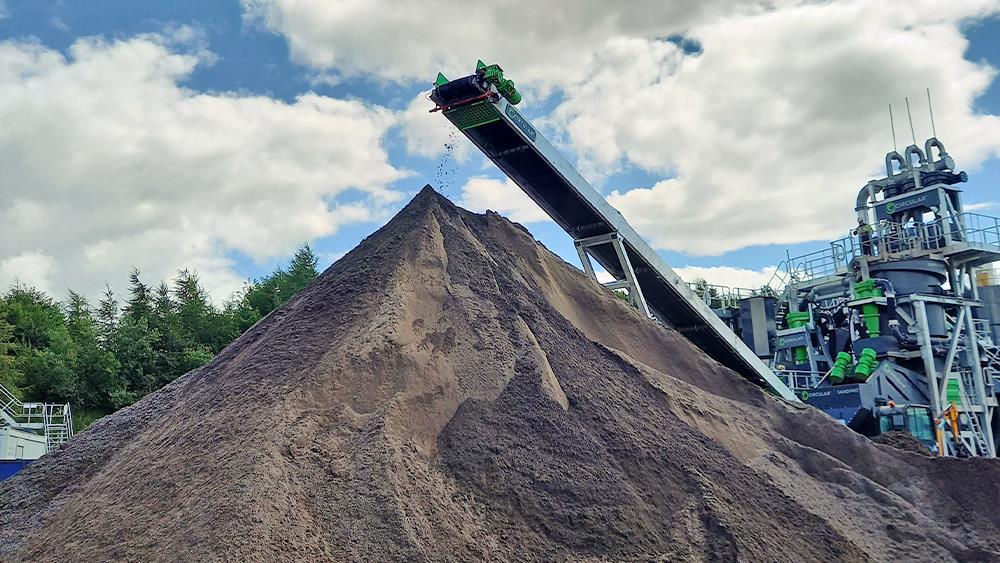

Dougie Neil, Head of Sales, Construction and Demolition, at The NWH Group, gives his insight into tackling the current sand shortage.
After water, sand is the world’s most consumed raw material and an essential commodity in our everyday lives, yet the world is facing a shortage and climate scientists say it constitutes one of the greatest sustainability challenges of the 21st century.
Sand is the primary substance used in the construction of roads, bridges, high-speed trains and even land regeneration projects. Sand, gravel and rock crushed together are melted down to make the glass used in every window, computer screen, smartphone and solar panel.
While it’s not currently possible to measure the global consumption of sand, there is a strong correlation between the use of sand and cement production. The UN estimates that 4.1 billion tonnes of cement are produced every year, driven primarily by China, which constitutes 58% of today’s sand-fuelled construction boom.
The global use of sand and gravels has been found to be ten times higher than that of cement. This means that, for construction alone, the world consumes roughly 40 to 50 billion tonnes of sand annually.
This is not to say we are running out of sand, but we must be mindful of the management of this essential resource. As the UK government wants to ramp up the delivery of infrastructure, housing and green energy schemes, all of which require hundreds of millions of tonnes of mineral products, we need to think carefully about the long-term supply of sand to meet demand.
The topic of sand is climbing the agenda and there is good work happening. Zurich, for example, is constructing buildings with 98% recycled concrete, Amsterdam has committed to becoming 100% circular by 2050, and is aiming to halve its use of natural resources use by 2030.
The global rate of sand use, which has tripled during the last two decades, partially as a result of surging urbanisation, far exceeds the natural rate at which sand is being replenished by the wind and water weathering rocks.
Whilst sand can be found in almost every corner of Earth, not all sand is useful. For example, desert sand grains, eroded by the wind rather than water, are too smooth and rounded to bind together for construction purposes.
Angular sand is typically more sought after because it can bind together more easily to create other vital materials such as cement. Angular sand is typically found and extracted from quarries, rivers and marine habitats.
This angular sand, or concrete sand, can also be sourced as a recycled material. This is growing in popularity, particularly at a time when not only is demand outstripping supply, but buyers are looking for more sustainable solutions for their projects. So we’re seeing the option of recycled concrete sand as a much more attractive product than quarrying for more virgin materials.
Earlier this year, The NWH Group officially opened its new £4.4 million construction and demolition waste recycling wash plant as it continues its investment into the circular economy and working towards carbon negative status.
The new facility at the business’ site on the outskirts of Edinburgh will enable the recycling of inert construction and demolition wastes through the latest technology using washing, screening, crushing and water treatment equipment.
The site will increase the business’ processing capabilities from 75 tonnes per hour to 250 tonnes per hour, and is capable of diverting more than 450,000 tonnes per year from landfill.
Not only does the new plant further increase recycling rates, it also improves the quality, reliability, grading and breadth of recycled resources available and expands the product range to six product types including 10mm aggregate, 20mm aggregate, 40mm aggregate, type 1 aggregate, washed concrete sand and building sand.
With its ability to wash smaller materials, the plant is capable of producing 5,000 tonnes of concrete sand per week. And that’s all from recycled materials so it comes with the added benefit of reducing waste to landfill, and truly following the principles of the circular economy.
We’re now better than ever before at recovering materials to produce high quality recycled new products so must work together with the industry to raise awareness of what’s available and create a long term strategy to overcome the challenges of the sand shortage.